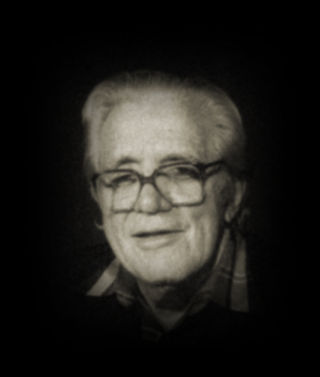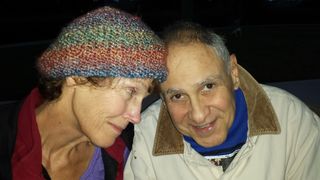Relationships
10 Essential Elements of Carl Whitaker's Theory and Therapy
Insights into one experiential provocateur's richly evocative therapeutic ethic.
Posted August 24, 2019 Reviewed by Ekua Hagan

By the mid-20th century, family therapy pioneers were overturning conventions. Chief among them stirred Carl Whitaker—country boy-turned-OB/GYN-turned-psychotherapeutic provocateur who Rich Simon, editor of Psychotherapy Networker, once called “fearless and idiosyncratic.”
In the vein of existentialist philosophers, Whitaker largely regarded his treatment paradigm as a protest against the reduction of human existence to mere behaviors, cognitions, or even theories.
There were at least 10 integral elements of Whitaker’s richly evocative therapeutic ethic. These are explored below.
Psychopathology as Distraction
Whitaker saw “symptoms as mere signals of, or even noisome distractions from, the real existential problems faced by families—birth, growing up, separation, marriage, illness, and death” (Luepnitz, 2002), and contended–
“Psychopathology is proof of psychological health. The individual who is distorted in his thinking is essentially carrying on an open war in himself rather than capitulating to the social slavery. His delusion system and his hallucinations are a direct result of this war with his lifetime situation—the stresses of his living and his efforts to defeat those stresses rather than become a non-person and a social robot.” (Whitaker and Ryan, 1989)
Responsibility of People in Therapy
Whitaker’s emphasis on personal freedom and responsibility derived from philosophers, such as Martin Heidegger and Edmund Husserl, who considered the psychological implications of existentialist thought. Ludwig Binswanger (1967) assimilated these ideas into a psychotherapeutic formulation, emphasizing “freedom and the necessity to discover the essence of one’s individuality in the immediacy of experience.”
Throughout Whitaker’s writings and therapeutic example, he conveyed existentialist presuppositions: anxiety and suffering can be growth-inducing; people have the power to choose to be responsible; elements of the human condition which exist in clients’ relationships with each other exist between clients and therapists.
Rousing awareness of change processes, Whitaker coaxed people toward ownership. He declared, “The integrity of the family must be respected. They must write their own destiny” (Neill and Kniskern, 1982).
Value of Courage
Whitaker regarded existential anxiety as an “irresolvable dialectic,” musing,
“The effort to solve living as a problem is impossible … The process of facing the dialectic life … is endless, irresolvable, and poorly understood … Security alone equals slavery. Exploration alone equals danger and death. The flux is always exciting but never an answer, only a courage-inducing impetus to more of the individual’s right to decide on the next move and to discover more and dare more.” (Whitaker and Ryan, 1989)
Transformative Nature of Vulnerable Encounter
By daring to be vulnerable with people in therapy, Whitaker exposed families to an existential encounter. When the family comes “face to face with part of your insides, they have to decide what to do … They’re free to produce their own extrapolations, depending on how it reverberates inside of them” (Whitaker and Bumberry, 1988).
Whitaker's symbolic-experiential engagement acknowledged a respect for the unseen depth of human beings. In his writing, he reflected on “I-thou” experiencing, a concept Martin Buber (1937) coined in describing the nature of our interactions with others as often more “I-it” than “I-thou.” One of Whitaker’s common therapeutic goals was for family members to begin to experience themselves more openly and nondefensively with one another; that an existential shift occurs on a systemic level.

The Primacy of Affective Experiencing
About one couple, Napier and Whitaker (1978) hypothesized, “They [are] most afraid of what many couples find the threatening aspect of their marriages: deadness.” In a similar vein, Keith and Whitaker (1982) wrote, “We presume it is experience, not education that changes families.” Whitaker often redirected attention from the content of conflict to the emotional process: “I would guess that almost anything you focused on together would bring out this disagreement… It feels more like a fear of conflict that’s the problem, rather than some particular issue you are fighting over” (Napier and Whitaker, 1978).
Power of Artful Communication
Whitaker developed the notion of symbolic communication as an interactional metaphor based largely on George Herbert Mead’s concept of symbolic interactionism. Whitaker stressed the importance of creating and shaping meaning between people and, consequently, facilitating shifts within the family emotional system. Whitaker saw his role as engaging a family by raising the intensity within its relationships and communicating symbolic meaning through experiential interaction in such a way as to catalyze the family toward intimacy.
Spontaneous Evocation as Healthy
Whitaker advocated a spontaneous and evocative presence with people in therapy as a means of engaging them at the hidden symbolic dimensions of awareness. Perhaps his most well-known display of spontaneity in therapy was when he wrestled with a teenage boy who had knocked Carl’s glasses off in a moment of rage: “As Don had struck out in panic and anger at Carl, Carl had tackled him, and the two of them went down onto the Oriental carpet, a tangle of limbs” (Napier and Whitaker, 1978).
This unplanned and, arguably, unprofessional encounter was certainly one of Whitaker’s more radical therapeutic moments. Yet it was also indicative of Whitaker’s view of therapy. Whitaker went as far as to advocate “craziness”—nonrational, right-brain experiencing—as a measure of health in both therapist and family (Whitaker and Keith, 1981). Whitaker explained, “My craziness [has given] other people the freedom to be more spontaneous, to be more intuitive, to be crazy in their own ways.”
Necessity of Present-Centeredness
Whitaker observed carefully and reacted quickly and intuitively to interactions between family members, both to prevent unhelpful more-of-the-same dynamics and to highlight potential signals of underlying emotional patterns, often the very mire in which the family is stuck. Whitaker saw the problems that families brought to therapy as failures to adapt together to common problems of life and the here-and-now as the necessary moment for creative intervention and change. He urged, “Life isn’t mind over matter, it’s present over past and present over future” (Keith and Whitaker, 1982).
Developmental Growth as Necessarily Relational
Every person must counterbalance needs for individual autonomy with needs for relational connection. Whitaker believed that therapy must stimulate the growth of the person alongside the growth of the system.
Whitaker worked to facilitate family cohesion, ensure family members were meeting each other’s needs in the process of their own individuation and developing proclivities for spontaneity, creativity, and attunement within the family. For Whitaker, the individual cannot grow in a relational vacuum.

Need for Holistic Versus Reductionist Goals
Whitaker saw the trajectory of therapy moving toward, for example, a heightened sense of competence, well-being, the development of compassion, self-esteem, role flexibility, awareness, self-responsibility, greater sensitivity, learning to recognize and express emotions, achieving intimacy with a partner, and so on.
Carl Whitaker died in 1995.
This article also appeared at GoodTherapy.org.
References
Binswanger, L. (1967). Being-in-the-world: Selected papers of Ludwig Binswanger. Needleman, J., translator. New York: Harper & Row.
Buber, M. (1937). I and Thou (2nd), translated by Ronald Gregor Smith. Edinburgh: T. and T. Clark.
Keith, D. V., and Whitaker, C. A. (1982). Experiential-symbolic family therapy. In A. M. Horne and M. M. Ohlsen (Eds.), Family counseling and therapy. Itasca, IL: Peacock.
Luepnitz, D. A. (2002). The family interpreted: Psychoanalysis, feminism, and family therapy. United States: Basic Books.
Napier, A. Y., and Whitaker, C. A. (1978). The family crucible. New York: Harper & Row.
Neill, J. R., and Kniskern, D. P. (Eds.). (1982). From psyche to system: The evolving therapy of Carl Whitaker. New York: The Guilford Press.
Whitaker, C. A., and Bumberry, W. M. (1988). Dancing with the family: A symbolic-experiential approach. Levittown: Brunner/Mazel.
Whitaker, C. A., and Keith, D. V. (1981). Symbolic-experiential family therapy. In A. S. Gurman and D. P. Kniskern (Eds.), Handbook of family therapy. New York: Brunner/Mazel.
Whitaker, C. A., and Ryan, M. O. (1989). Midnight musings of a family therapist. New York: Norton.




